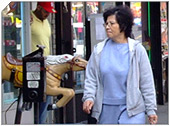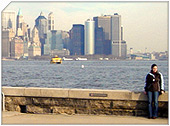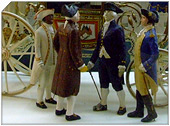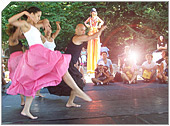St. Albans, Queens, New York City
|
Getting Started
Index
NYC Neighborhoods
Manhattan
Brooklyn
Queens
Bronx
Staten Island
NYC Icons
Chrysler Building
Flatiron Building
Empire State Building
Safe NYC
NYPD
FDNY
NYC Weather
NYC Climate
NYC Weather Forecast
Winter Season
Spring Season
Summer Season
Fall Season
NYC History & Politics
New York City History
Tammany Hall and Politics
New York City Politicians
New York City Personalities
Culture of Gotham City
Culture of the city
Cultural diversity
City in popular culture
|
St. Albans is a residential community in the New York City borough of Queens around the intersection of Linden Boulevard and Farmers Boulevard, southeast of Jamaica and northeast of Springfield Gardens and Laurelton. Many famous jazz musicians used to live in some of the large houses there (particularly in the western section known as Addisleigh Park).
Part of a land grant to Dutch settlers from New Netherlands Gov. Peter Stuyvesant in 1655, the area, like much of Queens, remained farmland and forest for most of the next couple of centuries.
By the 1800s, the plantations of four families - the Remsens, Everitts, Ludlums and Hendricksons - formed the nucleus of this sprawling farm community in the eastern portion of Jamaica Township.
The area was earlier known as Francis Farm -- possibly the farmland of the family of Francis Lewis of nearby Whitestone, a signer of the Declaration of Independence. Francis Lewis Boulevard is now the eastern boundary of St. Albans.
In the 1890s, St. Albans began to emerge from a sleepy farm community. The first street lights illuminated Lazy Lane, which became Central Road and then Linden Boulevard, and Freeman's Path, which became Farmers Boulevard. New shops clustered around August Everitt's lone store.
In April 1892, a N.Y. syndicate laid out the Francis Farm. On July 1, 1898, St. Albans railroad station opened (later razed in 1935, and replaced with grade elimination October 15, 1935). Today, the St. Albans station provides Long Island Rail Road service to Penn Station in Midtown Manhattan or Flatbush Avenue in Brooklyn, with transfers available at Jamaica station.
In 1899, a year after Queens became part of New York City, 100 residents officially named their community after St Albans in Hertfordshire, England, which itself was named after a Saint Alban, thought to be the first Christian martyred in England.
The St. Albans Golf Course, built in 1915, brought rich and famous golfers, including baseball star Babe Ruth. The Depression forced the golf course owners to sell to the government, and it became the St. Albans Naval Hospital, serving thousands of World War II veterans. The hospital was turned over to the Veterans Administration in 1974 and more recently evolved into the Veterans Administration St. Albans Primary and Extended Care Facility.
The housing here consists mostly of detached, one and two-family homes. Linden Boulevard is the major shopping street.
|
New York City Search
Quick NYC
|
|
|
 How safe is New York City?
How safe is New York City? Contrary to popular belief, the City consistantly ranks in the top ten safest large cities in the United States. The NYPD is the largest municipal police force in the world and has it's own Movie/TV Unit. |

New York has a humid continental climate resulting from prevailing wind patterns that bring cool air from the interior of the North American continent. New York winters are typically cold with moderate snowfall.  New York Weather Forecast New York Weather Forecast |

New York's two key demographic features are its density and diversity. The New York City metropolitan area is home to the largest Jewish community outside Israel. It is also home to nearly a quarter of the nation's South Asians, and the largest African American community of any city in the country.  Ethnic composition Ethnic composition |

New York Newspapers
 
|



 New York Weather Forecast
New York Weather Forecast
 Ethnic composition
Ethnic composition


















